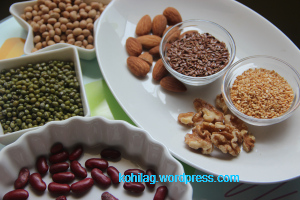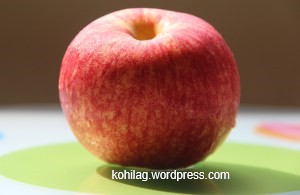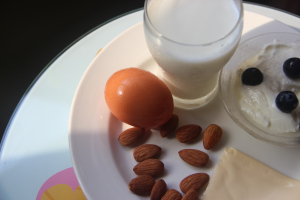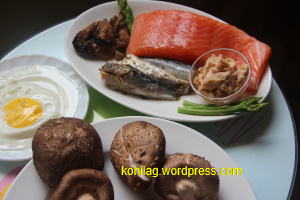Growth and development are in high-speed during teenage years and the demands for calories during this period in early adolescence is more than at any other time of life. A number of physiological, physical and behavioral changes occurs and these changes requires an increase in the amount of nutrients. The taller kids and those who involve in sports activity will still need increased amounts of energy into late adolescence.
Though it is obvious that adolescents need sufficient energy and nutrients for their growth and development, some are inactive and eat more than they need and become overweight. If they don’t show interest to reduce their weight by controlling their intake, obesity will take over them. Lifestyle changes will improve their weight in the long-term.
Protein is an essential micro nutrient for growth, and tissue repair. An athlete performance depends on muscle strength and these muscles are made of protein. It is not just the protein consumed in one sitting aid in muscle strength. Regular exercise along with high biological value proteins that is spread all throughout the day will help build up muscles. Young people should do regular exercise at least for 60 mins of moderate intensity activity (walking, cycling, dancing) every day. Protein recommendation per day for 11-13yrs is 34g and 14-18yrs is 46g. Athletes require a higher amount of protein than recommended, which is calculated by a sports physiologist/nutritionist, based on the intensity of the activity.
Teens needs carbohydrates that is vital to their health for various reasons. Carbohydrates are main source of energy. They help fuel the brain, kidneys, heart, muscles and central nervous system. It is the main fuel source of energy. But not all carbohydrates are equal. Eating breakfast made with “slow-release” of carbohydrates, like oatmeal 3 hours before exercise will help burn more fat efficiently.
- Whole grains are good sources of complex carbohydrates that takes longer time to digest and are high in fiber, selenium, magnesium and potassium than refined grains and products.
- Whole fruits and vegetables add water, fiber and bulk that are packed with fewer calories and at the same time it helps to feel fuller.
In order to maximize the amount of nutrients you take in, consume nutrient dense foods that is naturally lean and low in solid fats, sugars, refined starches and sodium. Beverages account for almost 40-50% percentage of added sugars consumed by teenagers. Desserts like cakes, pies, cookies, doughnuts, pastries, ice cream, frozen desserts and puddings, candies, syrups makes more than 75% of intake of all added sugars. Shift to reduce sugars consumption to less than 10 percent of calories per day. Choose beverages with no added sugars in place of sugar-sweetened beverages.
Mixed dishes (made of cheese, meat or both and sodium) like burgers, sandwiches, pizza, tacos, rice, pasta are major source of saturated fats. Shift to reduce saturated fats intake less than 10 percent of calories per day. Shift from high saturated fats to polyunsaturated and monounsaturated fats. Read the food labels and choose lower fat forms of foods. Best option is to change ingredients of the mixed dishes to healthier choices like vegetables, whole grains, lean meat and low-fat cheese, in place of fatty meat and cheese.
Most sodium consumed by teens comes from salts added during commercial food processing and preparation. Commercially processed or prepared mixed dishes and soups account for almost half of their sodium consumption. Reading food labels to compare sodium content of the product will help choose the product with less sodium. Limiting sauces, mixes and instant products like flavored rice, instant-noodles, ready to eat pasta will help reduce the sodium consumption. Garnishing the food with herbs and spices is another better option that curbs the salty desire. High sodium intake will increase blood pressure and cause calcium losses that leads to bone demineralization that increases the risk of osteoporosis causing fragility and breakages even in young people.
Calcium rich foods like low-fat dairy products, green vegetables like watercress, broccoli, almonds, fish with bones will help to increase the bone mass in young people. A combination of protein, calcium and vitamin C together help form collagen. So, balancing the meal is the key.
Iron requirements increase during adolescence to help with growth and muscle development. Girls need more iron to replace their menstrual losses. So, teens should focus more on iron rich foods. Iron from meat sources are readily absorbed by the human body. Though meat is a good source of iron, teens should go for lean protein that is low in saturated fat. Nuts, wholegrains, dark green leafy vegetables, figs are also loaded with iron. Iron in egg and vegetarian sources are not easily absorbed by the body. Vitamin C from fruits will help absorb the iron from these sources. So, it is wise to take fruits rich in vitamin C along with these foods. For example spinach and egg salad garnished with orange slices and lemon & mint dressing is a good, colorful and natural shot of iron. In addition it is also loaded with vitamins & minerals and fibers.
Adolescents should focus on fiber too. Fiber is a carbohydrate that aids in digestion and keeps cholesterol in control. Fiber latches onto your food and chauffeurs it through your body. Fiber is a natural laxative that promotes the movement of material through the digestive system and benefits those struggles with constipation. Teens should aim to have 25-30g of fiber every day.
Eating disorders are seen in many teen girls, particularly those aged between 12-18yrs. During middle and late adolescence, girls eat roughly 20-30% fewer calories per day than boys. Anorexia nervosa is an illness where girls tend to keep their body weight low either by consuming less, Some vomit after eating and some refuse to eat! Some girls use laxatives or overdo the exercise to keep their body weight low. Bulimia nervosa is another illness where the sufferers are obsessed with the fear of gaining weight. They lack self-control and have a recurring pattern of eating large food, followed by self-induced vomiting. Some have emotional overeating like eating large quantities of food in response to negative emotions. Few teenagers are binge eaters where they eat large quantities of food in faster pace than normal.
They are more likely to have vitamins & minerals in a scant amount. Lesser the amount of food consumed than recommended, lower the availability of vitamin A, zinc, iodine, and folate in some girls. Unless a doctor evaluation states a specific deficiency, it’s preferable to obtain nutrients from food instead from dietary supplements. Some teen boys too have eating disorders!
Awareness of food & exercise will help teens to avoid mistaken attitudes about food, weight and body shape. “A balanced meal” is the key to prevent eating disorders and regular exercise will help improve their moods!
References
https://health.gov/dietaryguidelines/2015
https://www.healthychildren.org/






































